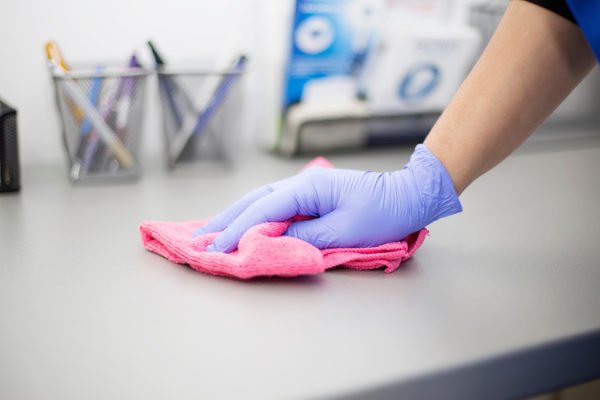
We have already seen many countries start to implement strategies to release their own lockdowns such as Spain and Germany.
Here in this country businesses have been calling for an end to the lockdown in order that they can survive this crisis. Many small business owners want to see a plan for this lockdown to end and while the most important issue is to protect lives the Government has started to consult with organisations as to how we come out of this crisis without jeopardizing peoples’ safety.
The Department for Business, Energy and Industrial Strategy has published some draft guidance on how the lockdown could look like for employers.
So, what should workers expect from their employer for a safe return to work? Let’s take a look…!
Preparing the workplace for a return to work
There are a few main steps your employer needs to consider before asking you to return to an office environment. Firstly, the business should put a strategic plan in place explaining how it’s going to communicate with staff to make them fully aware of what measures will be implemented for a safe return, and how they expect staff to behave when they return to work.
When you walk into work on that first day back, you want to see hand sanitisers and cleaning products in place so that you feel comfortable that you are not being put at risk when you return to work. There should be an increase in frequency of cleaning of work stations, with a provision of disinfectant so you can clean your work space.

A health and safety risk assessment of the office facilities should be conducted to establish whether it is practical for staff to social distance. How much space do you have in your offices for example? Is it an open plan working environment or do people have their own office where the risk of contamination is less?
A business that regularly see clients in the office, should consider limiting the number of face to face meetings and carry out meetings by platforms such as Zoom or Teams. Indeed, there should be a policy in place for your clients that they understand the procedures when they do visit the office.
The business should also look at facilities such as kitchens and rest areas, and may need to put rules in place that people should not congregate in these areas and should continue to practice social distancing when taking breaks. Rules may be put in place that staff use their own cutlery and crockery when having lunch in the office.

People with underlying health conditions may need to request having special measures put in place, such as working from home until a vaccine and/or therapeutics are in place. Flexible working could also be an option to reduce the number of staff in the office at any one time. It may be possible to assign staff to different teams and stagger working hours.
When it comes to commuting this needs to be considered too, and whether staff have to use public transport or if a car sharing policy would work.
Return to work

Once all of the above has been considered then your employer might need to amend the relevant policies to take account of the new measures in place. The business may consider giving the furloughed staff written notice of when they are expected to return to work.
New health and safety, disciplinary and sickness policies may need to be put in place that you should be made aware of to take account of any new procedures. These could cover changes to seating arrangements, sickness reporting and any new procedures relating to the kitchens and rest areas.
It may be necessary to change holiday polices as well, to ensure everyone does not take holiday at once when they return to work. And managers are going to have to be aware about employees’ mental health and how they are coping with their worries about contracting COVID19.
About the author: Jane Crosby, Partner and employment expert at Hart Brown Solicitors
